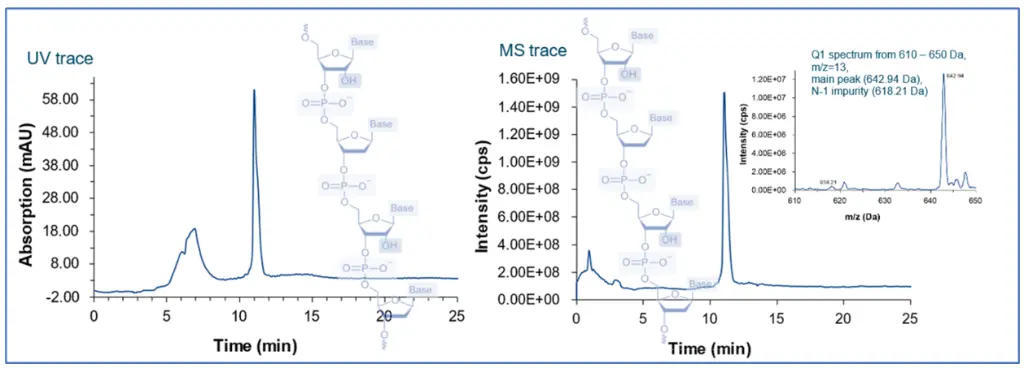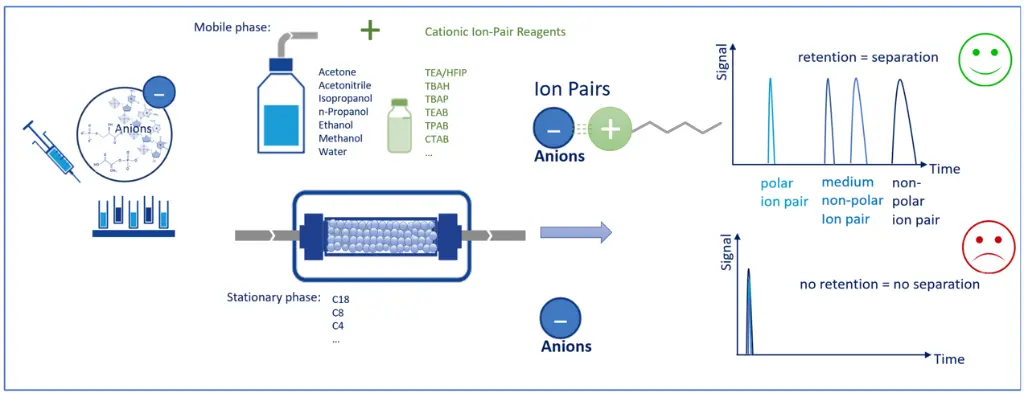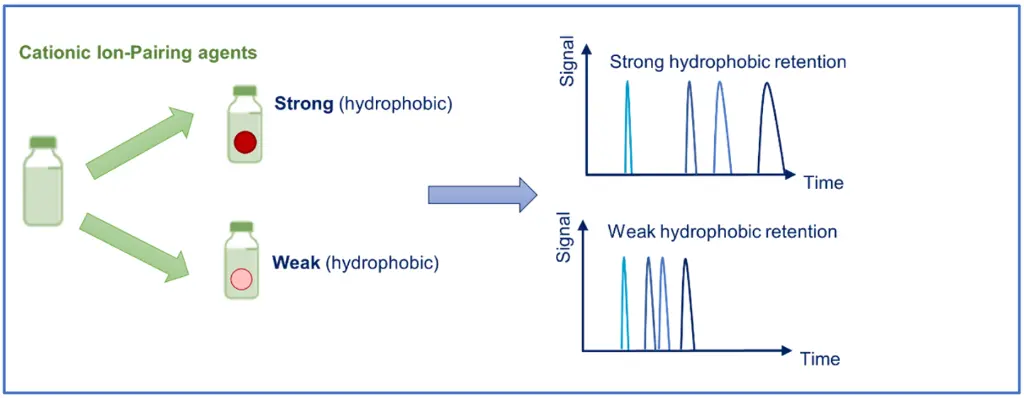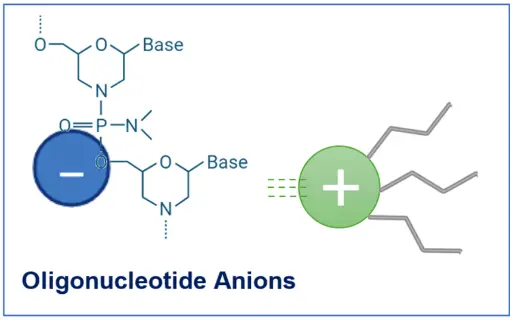Pair With Me: The Sleek Science of Ion Pair (IP)-Reversed Phase (RP) Oligonucleotide Analysis
💡Why Purity Matters in the Oligo Revolution?
In the high-stakes world of molecular biology, oligonucleotides those short, custom-built strands of DNA or RNA are doing some serious heavy lifting. They're the workhorses behind gene therapies, diagnostics, and research breakthroughs. But before these tiny powerhouses can work their magic, they need to be checked, double-checked by chromatography analysis, and we will explain how.

Figure 1: Separation Example of Oligonucleotides.
💡How Do Scientists Decode Oligonucleotides?
For those delving into the synthesis and analysis of oligonucleotides, Ion Pair Reversed Phase Chromatography (IP-RP) offers a robust and versatile separation technique. Unlike methods that separate molecules solely based on charge like we described in our Oligo Blog Part II, IP-RP blends hydrophobic and ionic interactions to distinguish between oligos with remarkable resolution, even those differing by a single nucleotide or modification. Whether you're purifying therapeutic-grade oligos or checking for synthesis byproducts, find out how IP-RP works in principle at the overview in figure 2.

Figure 2: Overview of IP-RP Mode prinicple.
💡What Makes Ion-Pair Chromatography a Game-Changer for Charged Molecules?
Here’s the trick: oligonucleotides are naturally negatively charged anions. Add a positively charged (cationic) ion-pairing agent into the mobile phase, think of it as a molecular matchmaker, and suddenly, your oligo becomes just hydrophobic enough to stick to the reversed-phase column. The stronger the bond, the longer it hangs on. Then, using a controlled gradient of organic solvent (acetonitrile recommended), the oligos peel off the column one by one, sorted by size, sequence, or even chemical structure (see also figure 3).

Figure 3: Ion-Pair Reversed Phase Principle.
💡How do you get negatively compounds to stick in a hydrophobic world?
There are some ion-pair requirements to get a sufficient separation profile. First, we need a positively charged cationic ion-pair reagent and the selection is huge. To retain negatively charged analytes onto a hydrophobic reversed-phase column, the ion-pair reagent’s power comes down to two things: chain length and charge. The more hydrophobic and ionic, the stronger the retention. Figure 4 gives a clear overview of how cationic ion-pair reagents are classified.

Figure 4: Ion-Pair Classification.
💡Who Are The Power Players in Cationic Ion-Pairing?
A collection of strong cationic ion-pair reagents characterized by longer alkyl chains are listed in table 1. Tetrabutylammonium salts, also known as TBA+ represent the most popularly used strong ion-pair reagent for anionic analytes in IP-RP analysis. The listed cationic ion-pair reagents can realize strong hydrophobic retention.

Table 1: Strong Cationic Ion-Pair Reagents.
💡 Who Are The Cationic Ion-Pair Agents Lightweights?
The second group of cationic ion-pair reagents forms weaker interactions and are characterized by short alkyl chains resulting in less retention effects (see also table 2). These weaker ion pairs are easier to wash away, making them ideal for LC-MS workflows. Leading the pack is triethylammonium agent, a volatile, ethyl-based ammonium ion that's become the go-to choice for oligonucleotide analysis, especially when mass detection is involved.

Table 2: Weak Cationic Ion-Pair Reagents.
💡 How Do You Crack the Code of Oligo Separation with IP-RP?
It´s a stepwise process and starts with analyte identification (see also table 3).

Table 3: IP-RP Method Step Procedure for Oligos.
Oligonucleotides come loaded with 10–50+ bases and a highly negative phosphate backbone. That calls for a potential cationic ion partner, think triethylammonium or diisopropylethylammonium DIEA+ (see figure 5), often paired with HFIP.

Figure 5: Cationic Ion-Pair Principle for Oligonucleotides.
Use a reversed-phase column with a large 300 Å pore size and wider ID to support the Oligo ON/OFF retention mechanism. The ON-OFF mechanism is how we describe the change from infinite retention to complete elution. You can also think of it as the "bind-elute" elution mechanism.
For the mobile phase, start with a 10 mM TEA buffer at pH 7 combined with acetonitrile. Gradient elution from 5% to 50% organic over 15–30 minutes is your go-to move for complex oligo profiles.
Want stronger retention? Increase ion-pair concentration up to 100 mM or switch to a more hydrophobic ion-pair reagent. And don’t forget method validation by checking robustness, reproducibility, and sensitivity, so monitor those UV or MS traces closely to confirm clean and sharp separations (see figure 6).

Figure 6: UV- / MS traces of IP-RP Oligonucleotide Analysis.
💡 Why can IP-RP be a Game-Changer?
Because it bridges the gap! Ion-pair reversed-phase chromatography (IP-RP) combines the power of reversed-phase separation with the ability to retain and resolve highly polar, charged analytes like oligonucleotides. By adding a tailored ion-pairing reagent, IP-RP transforms water-loving molecules into mobile-phase-friendly species, enabling sharp, tunable separations even for compounds that wouldn’t normally stick. It’s flexible, LC-MS compatible (with the right reagents), and scalable, making it a go-to tool from research to production. Therefor IP-RP is currently considered as the gold standard for analyzing oligonucleotides.
Don´t be afraid of mastering IP-RP. Build your oligo method like a pro: Pick the right ion-pair, select a suitable reversed phase, tune your gradient, heat it up, and fine-tune for sharp, clean, and reliable results, ready for any MS challenge!
If you're planning to set up or optimize your oligonucleotide workflow, feel free to contact us at sales@knauer.net. Stay tuned for more exciting insights into the Oligonucleotide world in our “Oligos Made Easy” series.
For more in-depth discussion or questions, reach out to the author at kindler@knauer.net

